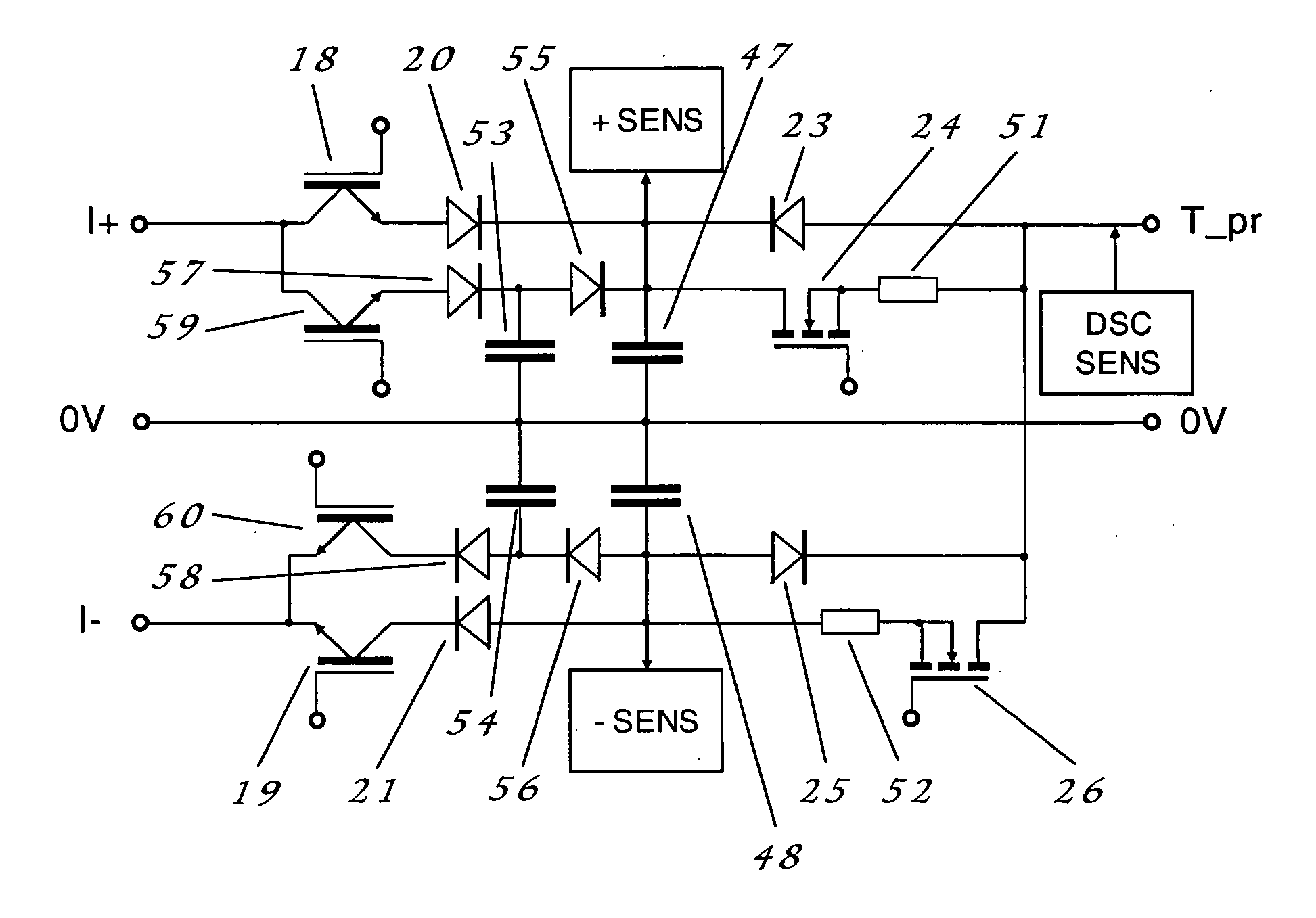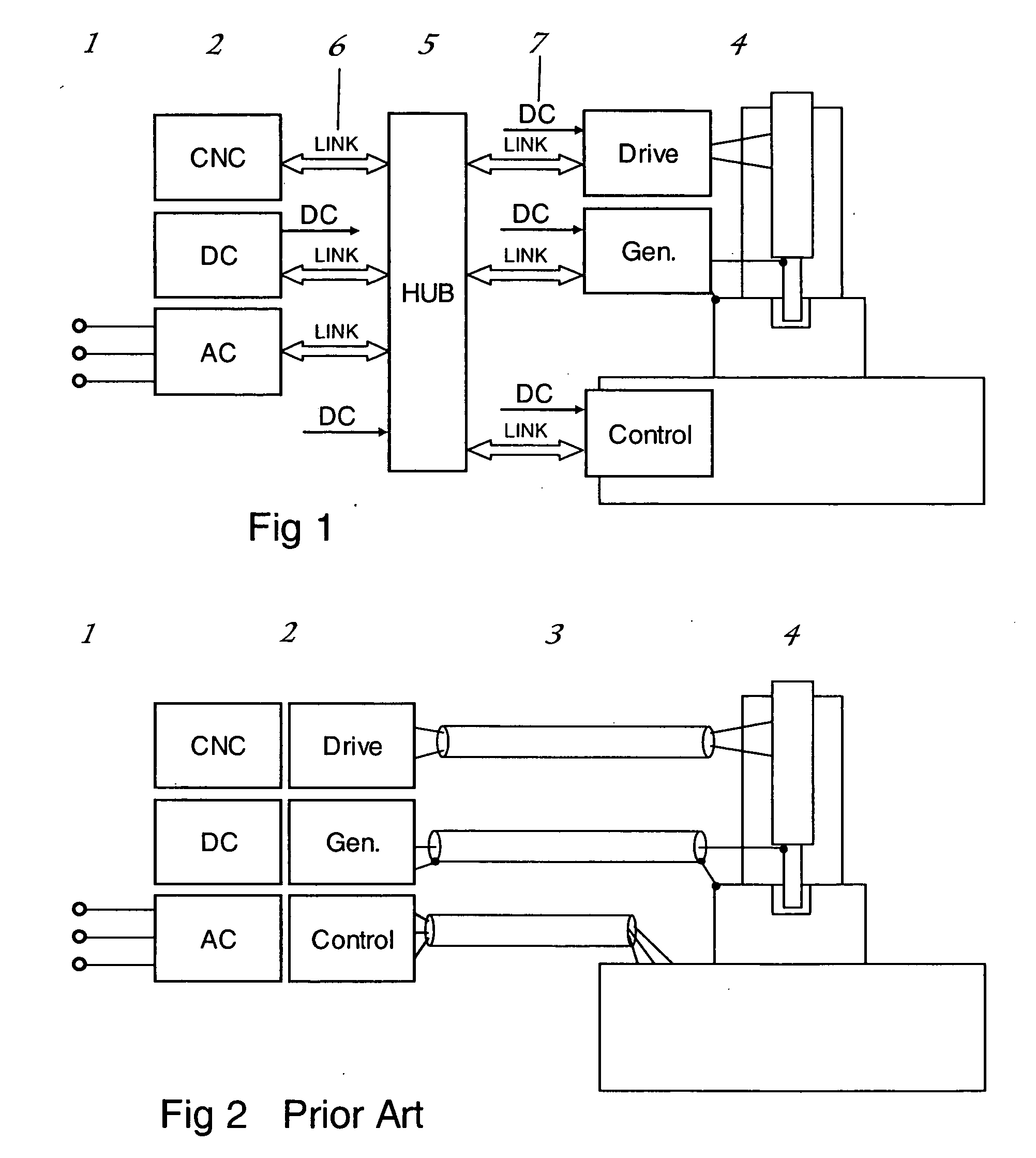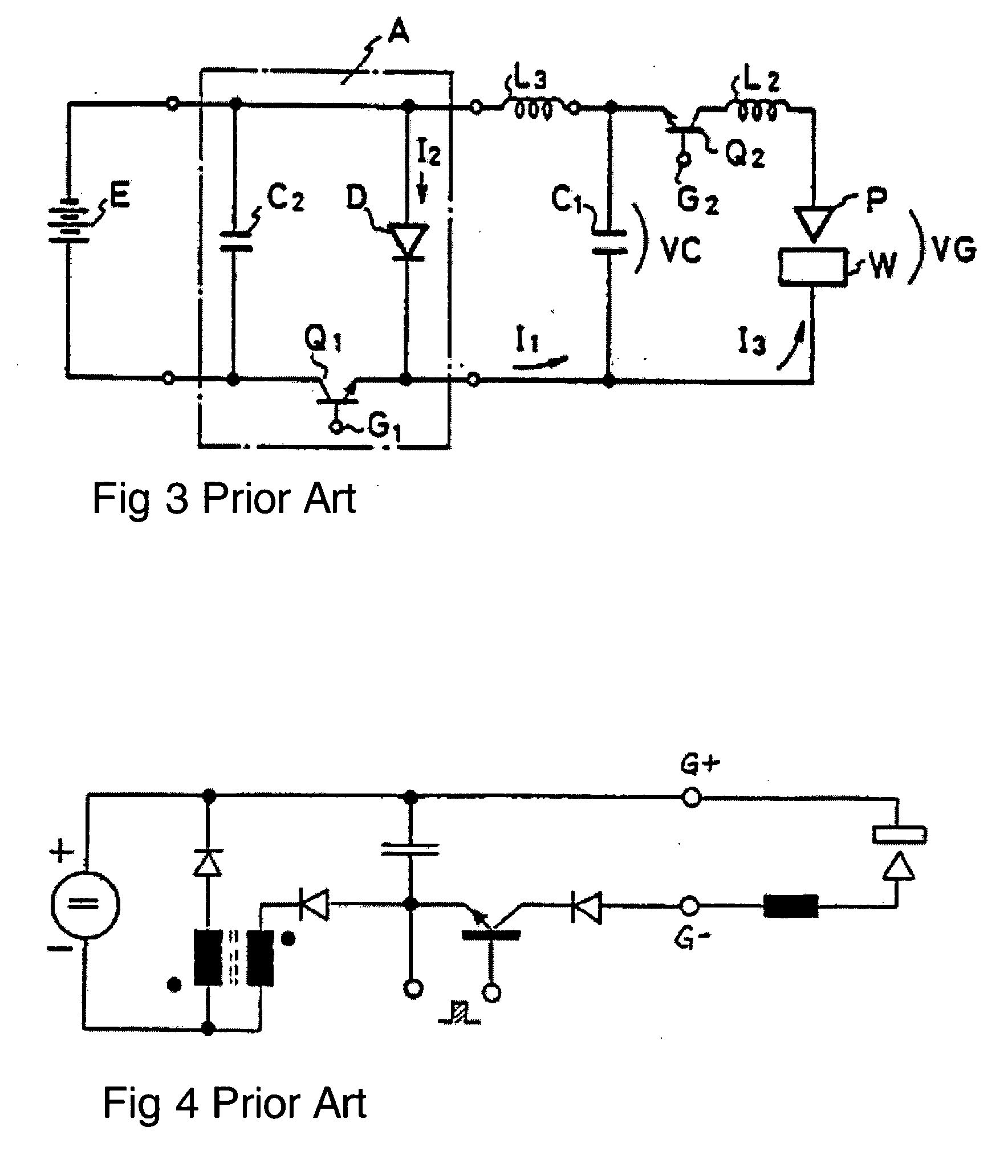Method and generator for electrical discharge machining
a generator and electrical discharge technology, applied in the field of machine tools, can solve the problems of significant cost factor, unsatisfactory overall concept, expensive downtime, etc., and achieve the effects of reducing power loss, improving output frequency, and opening new technological horizons for users
- Summary
- Abstract
- Description
- Claims
- Application Information
AI Technical Summary
Benefits of technology
Problems solved by technology
Method used
Image
Examples
Embodiment Construction
[0048]FIG. 1 illustrates the main modules of a die sinking machine which in this arrangement too, can be sub-divided into known modules, an AC mains input 1 with the subsequent AC module and a DC module. The power cabinet 2 is now considerably smaller, however, and can be housed in an operator console since the drive modules (Drive), the generator module (Gen.) and the universal machine control module (Control) are now all relocated in the machine 4.
[0049] The cable system 3 of FIG. 2 has been eliminated, it having been replaced by standardized data links 6 (LINK) which come together in a star configuration in a node 5. All information and commands from and to the various modules are also available for diagnostic purposes in the node 5. The node 5 is installed at a readily accessible location, but preferably on the machine 4.
[0050] The power supply of the various modules can be made directly via the data link 6 up to a wattage of approximately 50 W, standardized DC voltage cable 7...
PUM
| Property | Measurement | Unit |
|---|---|---|
| Polarity | aaaaa | aaaaa |
| Electrical inductance | aaaaa | aaaaa |
| Current | aaaaa | aaaaa |
Abstract
Description
Claims
Application Information
 Login to View More
Login to View More - R&D
- Intellectual Property
- Life Sciences
- Materials
- Tech Scout
- Unparalleled Data Quality
- Higher Quality Content
- 60% Fewer Hallucinations
Browse by: Latest US Patents, China's latest patents, Technical Efficacy Thesaurus, Application Domain, Technology Topic, Popular Technical Reports.
© 2025 PatSnap. All rights reserved.Legal|Privacy policy|Modern Slavery Act Transparency Statement|Sitemap|About US| Contact US: help@patsnap.com



